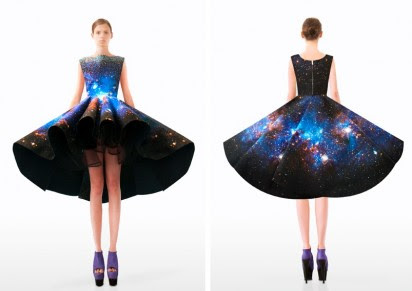Next spring the V&A will open the first UK solo exhibition celebrating the life and work of Yohji Yamamoto, one of the world’s most influential and enigmatic fashion designers. This installation-based retrospective, taking place 30 years after his Paris debut, will feature over 80 garments spanning Yamamoto’s career. The exhibition will explore the work of a designer who has challenged, provoked and inspired the fashion world.
Yamamoto’s visionary designs will be exhibited on mannequins amongst the treasures of the Victoria and Albert Museum (V&A). Placed in hidden corners of the Museum, the silhouettes will create a direct dialogue between Yamamoto’s work and the different spaces in which they are displayed. Items will be found on the Leighton corridor, in the Norfolk House Music Room and looking out onto the John Madejski Garden from an alcove in the Hintze Sculpture Galleries. Other pieces will be sited on marble staircases, adjacent to Renaissance sculptures in the Renaissance City Gallery and within the Tapestry Gallery...
Yohji Yamamoto's custom-made textiles use a variety of traditional Japanese techniques and other more common weaves such as gabardine and tweed. All his fabrics are made in Japan to his own specifications, making them unique to his designs.
'Fabric is everything. Often I tell my pattern makers, "Just listen to the material. What is it going to say? Just wait. Probably the material will tell you something."'
- Yohji Yamamoto
Fabrics

The importance of the fabric is tangible in every Yamamoto piece. From deciding the exact balance between the warp and the weft of the fabric and dyeing it the ideal hue to establishing the number of washings required to achieve the perfect balance between new and old, every fabric Yamamoto uses is specially created for him in Japan. Yamamoto's preference for exceptionally heavy fabrics and textiles not generally utilized in womenswear, high fashion or even clothing in general lends a particular slant to his sartorial language.
Embroidery
Yohji Yamamoto often uses embroidery, both hand and machine-made, particularly for his menswear designs as can be seen in Autumn/Winter 2006-7, Spring/Summer 2009 and 2011 collections. These intricate decorations contribute to Yamamoto's underlying desire to subvert people's perceptions of what men and women should wear.
Knitwear

The use of knitwear in Yohji Yamamoto's work often emphasises his wish to create space between the garment and the body. The heavy knit featured in both his Autumn/Winter 1998-99 womenswear and Autumn/Winter 2006-7 menswear collections, give the wearer the possibility of inhabiting the garment naturally, without being restricted by a predetermined form.
Shibori

Shibori is a particular method of dyeing cloth by binding small areas with either silk or cotton thread and using a wooden bucket to isolate areas to be dyed. Due to its intricate nature, it is one of the most work-intensive and expensive ways of dyeing. Yohji Yamamoto used this technique in his Autumn/Winter 1994-5 and Spring/Summer 1995 womenswear collections.
Yuzen

Kyo-yuzen is a dyeing technique which originated in Kyoto in the 1700s and is traditionally used for Kimonos. It consists of over 20 steps including design, drawing, gluing, dyeing and decorating. Yohji Yamamoto uses this dyeing method frequently, often through non-traditional motifs as can be seen in his Autumn/Winter 2009-10 menswear collection.















































